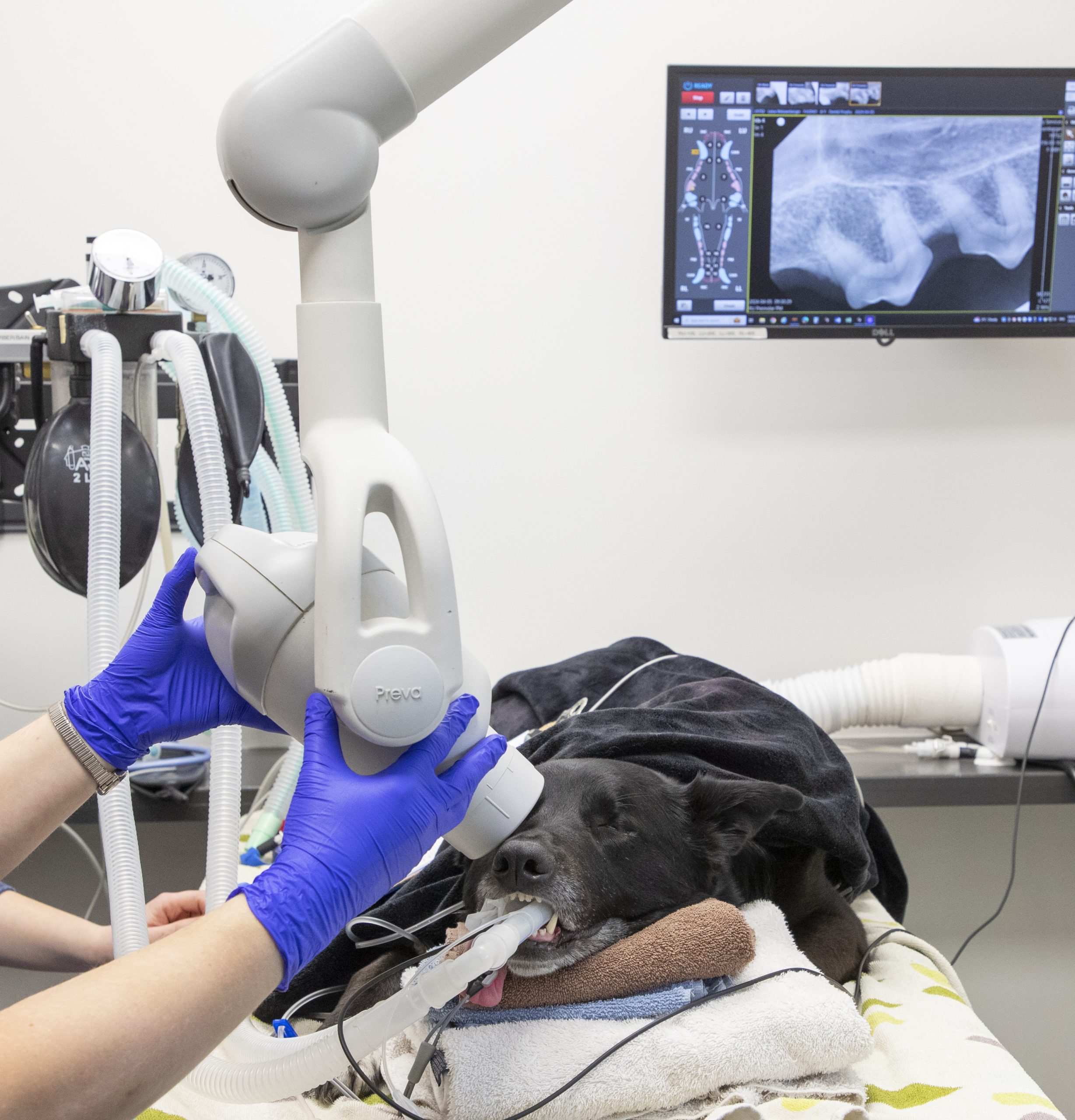
Dentistry
Similar to human counterparts, pets require regular dental evaluations, cleanings, and treatments to uphold oral hygiene. An annual checkup serves as an important opportunity to evaluate their dental status comprehensively and discuss any necessary interventions.
What is involved with a dental procedure at Tanglefoot?
At Tanglefoot, our dedicated dental suite is utilized for cleanings and dental surgeries. The process begins with a comprehensive physical exam, including an oral assessment, to determine if treatment is necessary. Estimates are provided, often as a range, due to the unpredictability of disease extent before anesthesia or dental radiographs. Pre-anesthetic assessments, including blood tests and, when recommended, x-rays or ECGs, ensure a tailored and safe procedure. On the day of the procedure, pets are admitted in the morning and discharged in the afternoon.
During the procedure, patients are placed under general anesthesia and closely monitored by a Registered Veterinary Technician under veterinary supervision. Our warming unit ensures patient comfort, while their blood pressure, heart rate, respiratory rate, and oxygen levels are meticulously monitored throughout. Full mouth radiographs allow assessment of subgingival disease, followed by ultrasonic scaling, subgingival cleaning, polishing, and fluoride application. Extractions, if needed, include regional nerve blocks for comfort and suturing with dissolvable sutures. Patients receive post-operative care and medications as necessary.

Our experienced veterinarians offer a range of services in small animal dentistry including:
- Dental Exams: Thorough oral examinations to assess dental health and detect any issues.
- Cleanings: Professional dental cleanings to remove plaque, tartar, and calculus buildup.
- Extractions: Surgical extractions of damaged or infected teeth to alleviate pain and prevent further complications.
- Periodontal Care: Treatment and management of gum disease to maintain healthy teeth and gums.
- Dental X-rays: Advanced imaging techniques to evaluate tooth roots and surrounding structures for accurate diagnosis.

Why does my pet need to go under anesthetic for a dental?
General anesthesia is crucial for thorough assessments, radiographs, cleaning and extractions. Awake patients cannot undergo these procedures safely or comfortably. Additionally, protecting the airway is essential during scaling, and performing procedures on awake patients causes unnecessary stress and pain.
Some additional information on anesthesia-free dentals:
For Pet Owners – Anesthesia Free Pet Dental Cleanings – Know the Facts (avdc.org)
